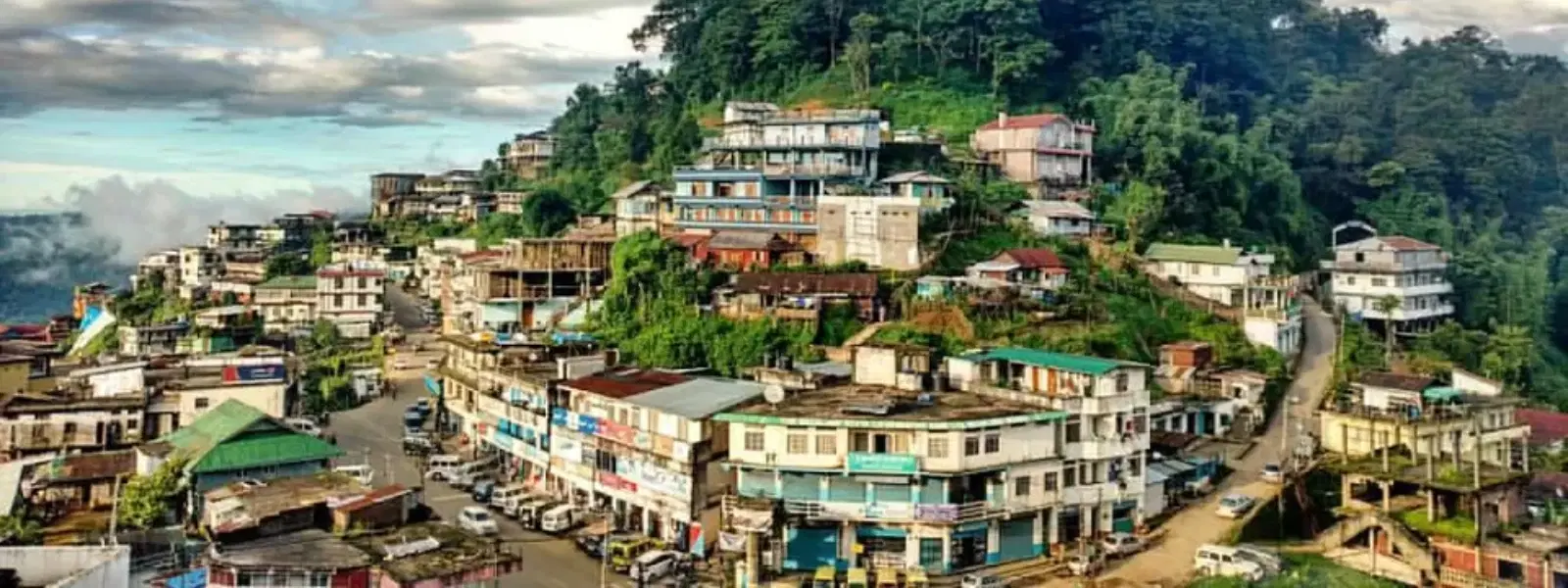
Flights
•03 min read

Mokokchung, often celebrated as the cultural heart of Nagaland, captivates visitors with its enchanting Ao Naga villages. Home to the Ao Naga tribe and deep-rooted traditions, this region exudes a magnetic blend of history and natural beauty. In this blog, we address frequently asked questions about Mokokchung Ao Naga villages, exploring their culture, traditions, history, and tourism opportunities. Readers will embark on an inspiring journey into the world of Nagaland's hill tribes and discover how Ao Naga culture continues to shape the vibrant cultural landscape of this unique destination.
Ao Naga villages are the vibrant communities that form the backbone of Nagaland's tribal heritage. They are not just settlements but living museums chronicling the traditions, customs, and social fabric of the Ao Naga tribe. The people here are proud guardians of indigenous practices that have molded the cultural identity of Mokokchung, making these villages a cornerstone of regional history and heritage.
Mokokchung district is characterized by distinctive ranges such as Jangpetkong, Langpangkong, and Asetkong. Each range comprises several Ao Naga villages, all administrated under a system that reflects the tribe's age-old traditions. These administrative structures ensure local customs are respected while accommodating modern governance, thus maintaining a delicate balance between preserving tradition and embracing progress.
Ao Naga festivals, such as Moatsu and Tsungremong, are lively celebrations that mark the rhythm of agricultural cycles and community life. These festivals are not only a vibrant display of Ao Naga culture but also serve as key moments for communal worship, colorful rituals, and song-and-dance performances that attract tourists from across the world. The festivities provide a window into the soul of Nagaland tribal heritage and contribute significantly to local tourism.
The Ao Naga language is more than a means of communication; it is a repository of the tribe's wisdom, history, and cultural narratives. Alongside language, the clan system plays a pivotal role in village life, with surnames denoting lineage and social standing. This structured system fosters a sense of belonging and solidarity among community members while preserving the distinct identity of each clan within the Ao Naga tribe.

Did You Know? Ao Naga festivals are deeply rooted in agricultural cycles, symbolizing gratitude and community bonding. Visiting during Moatsu or Tsungremong offers a rare glimpse into the vibrant traditions of Nagaland.
The historical tapestry of Mokokchung villages is both complex and intriguing. These communities played a significant role in introducing Christianity and modernization to the region. Villages like Ungma, often regarded as the oldest Ao Naga village, stand as testimonials to centuries of cultural evolution and resilience, bridging ancient customs with contemporary influences.
Today, there is a conscious effort to safeguard Ao Naga traditions amid rapid modernization. Local cultural centers and museums have risen as custodians of heritage, displaying time-honored artifacts and narratives that convey the rich history of the Ao Naga people. This commitment to preservation ensures that future generations will continue to experience the authentic spirit of Mokokchung Ao Naga villages.
The region offers a myriad of attractions that capture the imagination of every traveler. Must-visit villages such as Longkhum, Ungma, and Chuchuyinlang provide a glimpse into traditional life. Moreover, natural wonders like the Langpangkong caves and pristine hill ranges add an adventurous twist to the experience, making Mokokchung a key destination for those seeking to immerse themselves in Ao Naga traditions and Nagaland tribal heritage.
Getting to Mokokchung is easier than ever, whether you opt to travel by road, train, or flight. The best time to explore these villages is during the festival season when the air is filled with anticipation and cultural fervor, or during the pleasant weather months that allow for seamless exploration of the scenic hill ranges. Each journey here is a blend of adventure and cultural immersion, allowing even the most spontaneous traveler to experience the rich tapestry of Ao Naga culture.

Ungma is one of the most prominent Ao villages in Nagaland, often regarded as the oldest Ao Naga village.
The Ao Naga tribe predominantly resides in Mokokchung, contributing to its rich cultural heritage.
Mokokchung villages have a deep historical significance, including being early centers for the spread of Christianity and modernization in Nagaland.
Longkhum village is often praised for its cleanliness and scenic beauty, making it a popular destination for visitors.
Mokokchung district comprises several villages spread across ranges like Jangpetkong, Langpangkong, and Asetkong.
Mokokchung stands as a vibrant cultural hub in Nagaland, embodying the spirit of the Ao Naga tribe through its unique blend of history, traditions, and natural attractions. The rich tapestry of Ao Naga culture and their profound connection to the land make the Mokokchung Ao Naga villages an essential destination for anyone intrigued by Nagaland tribal heritage. This immersive journey into the heart of Nagaland not only highlights the enduring traditions of the Ao Naga people but also invites every traveler to explore the timeless charm of this remarkable region.